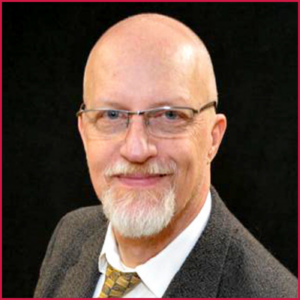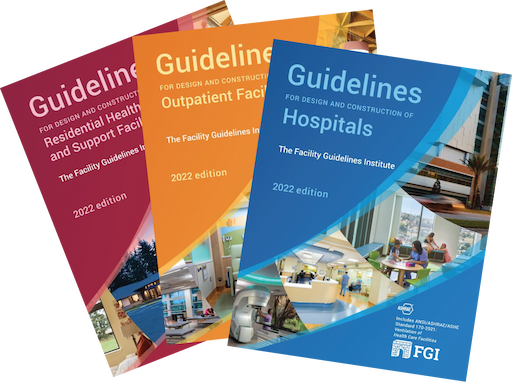S2E4 – MRI Safety and the Built Environment
Introduction
After listening to this episode, you’ll understand why guest Tobias (Toby) Gilk says, “The physics associated with MRI scanners is so otherworldly and so profoundly different from our daily experience interacting with the world that everything seems magic associated with this particular imaging modality.” The profound differences with MRI don’t stop with just the physics; there are a host of built environment considerations for the spaces that house MRIs as well as operational implications for patient and staff safety. Toby gives a quick lesson on how MRIs work, shares a story of how tragedy led to codified safety measures, and answers John and Bridget’s questions about the whys behind the codes.
About Tobias Gilk
 Tobias (Toby) Gilk, MRSO, MRSE, specializes in radiology/medical imaging design, consulting, safety, and risk management as senior vice president at RADIOLOGY-Planning, a division of JUNK Architects. Toby earned his M. Arch from the University of Kansas in 1997 and has spent essentially his entire architecture career in health care, particularly radiology/nuclear medicine, “with a specific fondness for MRI.” Toby is a founding board member and past chair of the American Board of Magnetic Resonance Safety (ABMRS) and twice served on the American College of Radiology’s (ACR) MRI Safety Committee, co-authoring three of that group’s MRI safety publications. Toby is one of the founding partners of CAIREreporting.org, an MRI-specific, identity-protected, adverse event reporting platform, and the founder of Gilk Radiology Consultants, providing training and consulting services for radiology practices and device manufacturers. Toby currently serves as chair of the Remote Scanning Quality & Safety (RSQS) Council and serves as a member of FGI’s Health Guidelines Revision Committee.
Tobias (Toby) Gilk, MRSO, MRSE, specializes in radiology/medical imaging design, consulting, safety, and risk management as senior vice president at RADIOLOGY-Planning, a division of JUNK Architects. Toby earned his M. Arch from the University of Kansas in 1997 and has spent essentially his entire architecture career in health care, particularly radiology/nuclear medicine, “with a specific fondness for MRI.” Toby is a founding board member and past chair of the American Board of Magnetic Resonance Safety (ABMRS) and twice served on the American College of Radiology’s (ACR) MRI Safety Committee, co-authoring three of that group’s MRI safety publications. Toby is one of the founding partners of CAIREreporting.org, an MRI-specific, identity-protected, adverse event reporting platform, and the founder of Gilk Radiology Consultants, providing training and consulting services for radiology practices and device manufacturers. Toby currently serves as chair of the Remote Scanning Quality & Safety (RSQS) Council and serves as a member of FGI’s Health Guidelines Revision Committee.
Acronyms Mentioned
FGI: Facility Guidelines Institute
MRI: magnetic resonance imaging
ICU: intensive care unit
CFO: chief financial officer
CT: computed tomography
ACR: American College of Radiology
RF: radiofrequency
PET: positron emission tomography
HVAC: heating, ventilation, and air conditioning
Mentioned in this episode
Health Guidelines Revision Committee
Isadore Rabi
spectroscopy
MRI machine
MRI scanner room
CT scan
X-ray
PET scan
linear accelerator
magnetic fields
tesla
Michael Colombini
ACR 4-Zone Strategy for MRI Safety
5 gauss
9 gauss
radioisotope
pacemakers
Guidelines
quench pipe
AIA self-reporting LUs
Facility Guidelines Institute is a registered provider of AIA-approved continuing education under Provider Number 38744124. All registered AIA CES Providers must comply with the AIA Standards for Continuing Education Programs. Any questions or concerns about this provider or this learning program may be sent to AIA CES ([email protected]).
This learning program may be self-reported for LU credit through the AIA Continuing Education System. As such, it does not include content that may be deemed or construed to be an approval or endorsement by the AIA.
To receive AIA self-reported LUs, learners must complete and self-report two of these entire learning programs for 1 LU.
Sponsored by
 American Society for Health Care Engineering (ASHE): Optimizing health care facilities
American Society for Health Care Engineering (ASHE): Optimizing health care facilities
Transcript (download transcript)
Don’t forget to share with your friends and colleagues!

Special thanks to Neal Caine and the Neal Caine Trio for the use of his song “Skip To My Lou” by the album of the same name.
Find the album on Spotify or Apple Music.
Visit Neal Caine’s website here.




